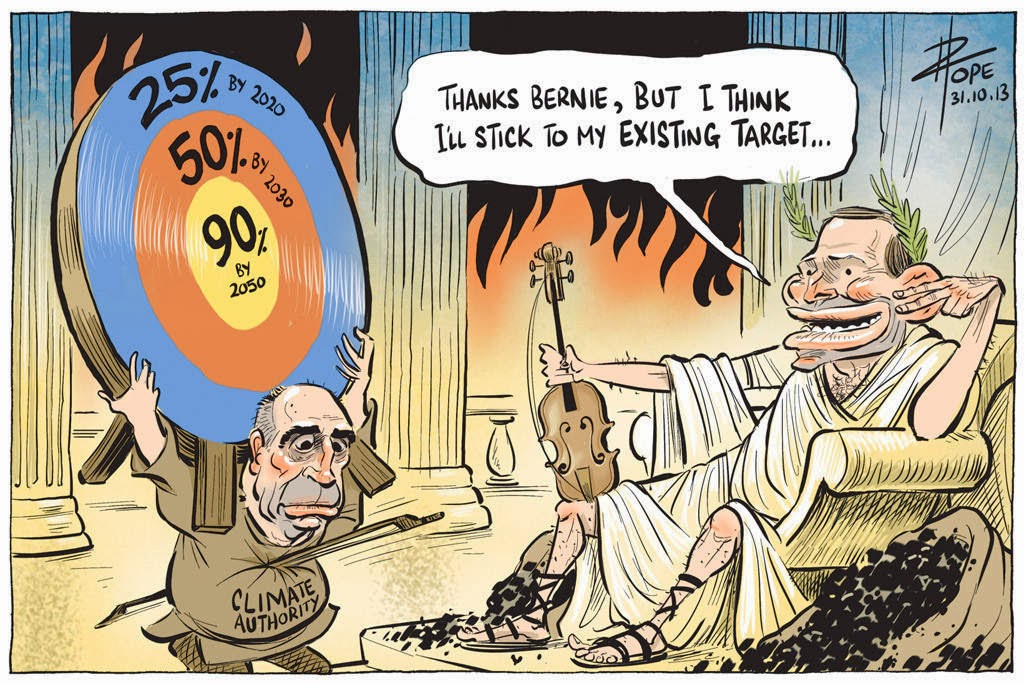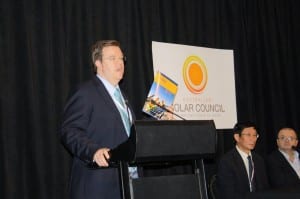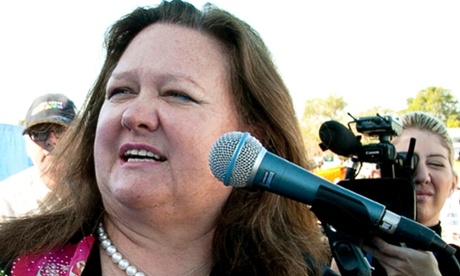Australian Premier Tony Abbott under fire as 'environmental vandal'
less than a year as Australian government leader, Prime Minister Tony
Abbott has drawn more ire from environmentalists than most
anti-regulation crusaders manage in a full term in office.
He delivered last month on his chief campaign promise to make the land Down Under the first to repeal a functioning carbon tax on the biggest emitters of greenhouse gases.
His government has also
approved the massive Carmichael Coal Mine development in Queensland that
environmentalists say threatens to damage the Great Barrier Reef with
its runoff and to blast the atmosphere with an additional 130 million
tons of carbon dioxide each year.
He invited loggers
to Parliament House in Canberra in March to bolster his Liberal Party
government's push, unsuccessful so far, to open pristine Tasmanian
forest to logging by having the UNESCO World Heritage designation of the
183,000-acre preserve revoked.
He
put a climate change skeptic in charge of the country's Renewable
Energy Target program, then slashed $435 million in funding for its
commitment to producing at least 20% of energy needs from renewable sources by 2020. A study published
last week said the new policy would add $10 billion to oil and gas
company profits without noticeably lowering household electricity bills.
And in the interest of streamlining the environmental impact assessments on new energy projects, Abbott has shifted authority from federal agencies
to Australia's state and territorial governments to review the
voluminous expert research and analysis and to greenlight proposals,
potentially in as little as 10 days.
The prime minister's
ramrodding of regulation and tax rollbacks has stirred accusations from
environmental scientists that the new administration is an "environmental train wreck"
and from political opposition leader Bill Shorten, who called Abbott an
"environmental vandal" who is "sleepwalking Australia" to economic
disaster.
But
the conservative deemed "unelectable" by his own party before leading
it to parliamentary victory and himself to the government seat in
Canberra has been playing to an appreciative audience in the business
and industrial circles he courted to win the Sept. 7 election.
When
Abbott laid out his vision for removing obstacles to logging the
Tasmanian old-growth forest, he called the Australian Greens party "the
Devil," drawing a rousing ovation from timber industry stalwarts in the
visitors' gallery.
Environment Minister Greg Hunt has also made
progress in selling the Carmichael mining venture to the public with the
Indian private investor's promise of more than 3,900 jobs once the mine
is fully functional and $300 billion for the economy over the next 60
years.
Abbott's
predecessors from the Labor Party managed to shepherd the country
through the recession with less damage to citizens' well-being and
living standards than was borne in most Western countries, thanks to
lucrative resource sales to China.
But the slowdown in energy and
commodities exports over the last three years and Labor's infighting
that saw one faction depose another turned much of the country against
the more environmentally friendly former government, especially those
seeing potential dollar signs from expansion of coal seam fracking and
other industrial expansions that have bogged down amid improved
regulation to protect the air, water and climate.
Some recent
assessments of Abbott's hard line on the environment have suggested,
though, that his policies might not survive his early days in office as
young Australians are vehemently opposed to them.
A June poll by the Lonergan Research firm found 97% of Australians surveyed supported continued World Heritage listing for the Tasmanian forest, which includes 2,000-year-old growth and the world's tallest flowering trees.
Timber
industry jobs account for only 1% of Tasmanian employment, compared
with 15% in tourism, the Guardian newspaper reported in its account of
the March parliamentary reception for Tasmanian loggers. It called
Abbott's hopes for harvesting the habitat of the endangered Tasmanian
devil "visionless and destructive dogma."
Follow @cjwilliamslat for the latest international news 24/7
Copyright © 2014, Los Angeles Times











